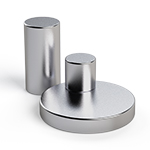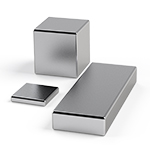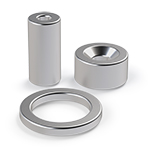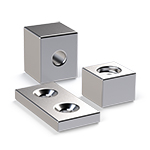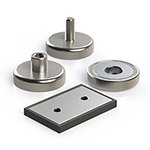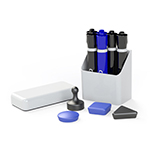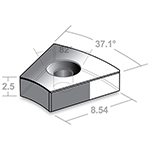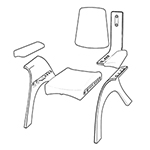Where are Neodymium Magnets Used 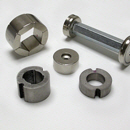
Neodymium is a rare earth metal used to create powerful magnets. There are many places where neodymium magnets are used. Neodymium magnets are the strongest type of rare earth magnet, and have many applications.
Neodymium magnets are used as alternatives to AlNiCo and ferrite magnets. They create a strong permanent bond, even in a small package.
Due to their strength and versatility, neodymium magnets have many applications. They are produced for industrial and commercial use. You can find them in everything from jewelry and toys to computers and electric vehicles.
Some of the innovative uses of neodymium magnets are:
- Transportation,
- Jewelry/Design,
- Fashion,
- Electronics,
- Sensors,
- Motors,
- Construction/Architecture,
- Industry/Manufacturing, and
- Healthcare.
Transportation
The transportation industry uses construction magnets and industrial magnets. These magnets help to remove ferrous metal.
Magnetic sweepers may be found in loading areas. These sweepers collect iron scrap from airports, docks, and truck depots that might puncture tires. This helps prevent costly repairs and delays due to down time.
Jewelry/Design
Magnets are frequently used in jewelry and clothing design. Necklace closures can be made magnetic to make fastening and removing jewelry easy. This can be useful for customers with arthritis who may find traditional clasps difficult to manage.
Magnetic backings hold earrings in place without a piercing. Magnets are also commonly used to hold pins or nametags in place. Because they don’t require piercing the fabric, they don’t damage the shirt.
Fashion
Magnets are increasingly used in fashion as a simple and modern alternative to buttons or zippers. Like magnetic jewelry clasps, these can be invaluable for people with disabilities. Magnetic zippers can help people retain their independence in dressing and undressing.
Magnetic zippers or snaps are also useful when silence is required. They may be added to clothing intended for hunters who want to access a pocket without the sound of a zipper. Magnets can be part of the original design or added later, to replace buttons or snaps. Magnets used to replace snaps or buttons can be sewed into garments, using special sewing magnets.
Electronics
Hard disk drives have sectors that contain magnetic cells that are charged when data is written to the drive. Typically, there are neodymium magnets in a hard drive, both in the drive and linear head motors.
Microphones, headphones and loudspeakers also contain magnets. Permanent magnets are used in conjunction with coils to carry electrical current. This current converts electricity into mechanical energy. That energy moves the speaker cone to change the pressure of the surrounding air to create sound.
In mobile phones, the vibrating alert may be created by permanent magnet motors.
Sensors
Amazing Magnets creates sensor magnets used in many engineering and industrial applications. These may include:
- Automobile design,
- Robotics,
- Geophysics,
- Medical devices,
- Space exploration, and
- Industrial measurement tools.
Magnetic sensors detect changes in a magnetic field. By sensing a change to the strength, flux, or direction of the magnetic field, they can detect important changes.
There are many different types of magnetic sensors. Anti-lock brake sensors use neodymium magnets wrapped inside copper coils.
Motors
Electric motors contain neodymium magnets. Neodymium magnets are also found in synchronous motors and different types of rotary motors.
In a synchronous motor, a magnet moves the coils of a spinning rotor at the same frequency as the alternative current (AC). This creates a magnetic field that drives the motor.
Rotary motors use a permanent magnet in the rotor. They work by alternating attraction and repulsion between the rotor magnet and the stator electromagnets.
Neodymium magnets power electric motors found all around you. These may be found in:
- Cordless tools,
- Pumps,
- Robots,
- Medical equipment,
- Laboratory equipment, and
- Drive motors for electric vehicles.
Construction/Architecture
Magnets are essential components of tools and machines used in the construction. They are used in:
- Assemblies,
- Separators,
- Conveyors,
- Plates,
- Chutes, and
- Magnetized pulleys.
Construction magnets are useful for cleaning up construction sites. Magnetic sweepers and tow magnets can help clear a site of ferrous metal debris.
Large construction equipment relies on small magnets that are instrumental to their function. Magnets are used to ensure that formwork installation is safe and accurate. Magnetic shuttering and formwork systems are used for precast concrete production.
Industry/Manufacturing
Industrial magnets are an integral part of manufacturing and operations.
Some industries use neodymium magnets for manufacturing. These include:
- Automobiles,
- Electronics,
- Plastics,
- Glass, and
- Ceramics.
Other industries use neodymium magnets to help with operations. These include:
- Shipping,
- Construction,
- Mining,
- Food manufacturing, and
- Pharmaceutical manufacturing.
Scrap metal and recycling companies use powerful neodymium magnets to help sort recyclables.
Magnets often used in the food processing are Seperator Bar Magnets.
Medical
Magnets are central to the technologies that medical equipment like MRI machines. Magnets can be used to extract foreign objects from patients, and possibly avoid medical intervention. Tiny magnets are even used to keep dentures securely in place.
Other medical devices that use neodymium magnets include:
- Magnetic switches
- Blood separators, and
- Motors for surgical/dental devices.
Magnetic therapy has been used as an alternative treatment for chronic pain syndromes. Proponents of magnetic therapy claim that it helps reduce pain and inflammation.
Neodymium Magnets are Used Everywhere
Neodymium magnets are a versatile and innovative solution for many problems and challenges that we face in the modern world.
As we find more uses for rare earth magnets, we will continue to enjoy their versatility and unique benefits.
